博客
Looking Forward to Next Year's Gion Matsuri Festival – A Father & Son's Insider Story on the Festival Float's Musical Tradition
博客
Looking Forward to Next Year's Gion Matsuri Festival – A Father & Son's Insider Story on the Festival Float's Musical Tradition
Mr. Yoshinori Nishiura and his son Teruki are musicians that play on the festival floats of the Gion Matsuri Festival. During the festival processions called Yama-hoko Junko, floats decorated with elaborate textiles parade through the downtown streets in time with the slow, yet entrancing, music played by the “hayashikata” musicians riding on the high, veranda-like float platforms. The hayashikata musicians play a vital role in livening up the festival while setting the rhythm and tempo for the processions. Also, residents of all ages come to stroll around the floats lit up with lanterns and enjoy the music during the Yoiyama evenings before the parades. Thus, the sound of the flutes and drums, accompanied by the chiming of small gongs, resonates with summer memories for many locals.
The parade processions were cancelled both this year and last year due to the global pandemic, but this year, some of Gion Matsuri Festival’s float communities decided to assemble the floats and allow music practice, in order to preserve the tradition, and the skills, required to carry on this annual event. There are over thirty floats in the festival today, each belonging to a neighborhood community, and each with at least five hundred years of history. Mr. Nishiura and his son belong to one of these floats called Kankoboko, the Kankoboko Float.
Although the Gion Matsuri Festival is one of the most visited festivals of Kyoto, probably few of us know what it’s like to be on the side of the people who carry it out. Hoping to provide you with an insider view for when you visit the Gion Matsuri Festival in the future, we asked this father and son about the festival as experienced at their float.
1. Why did you become a member of the festival music band?
– It’s my pleasure to be able to interview you today. First, could we begin with this question: Why did you, Mr. Nishiura, join the Kankoboko Float’s hayashikata music band?
Mr. Nishiura: I joined the hayashikata, the festival music band, when I was in the third grade of elementary school. My mother’s parents’ home was in another neighborhood that hosted the Kakkyoyama Float, so I had always been familiar with the activities of the Gion Matsuri Festival. Then, I saw my uncle play in the Kankoboko Float’s music band, and I was so impressed by it. That was how it all began.
– I see. I also think the musicians look absolutely fabulous when they are riding on the Gion Matsuri Festival floats and playing the music. Now, is it true that your son, Teruki, joined the band from this year?
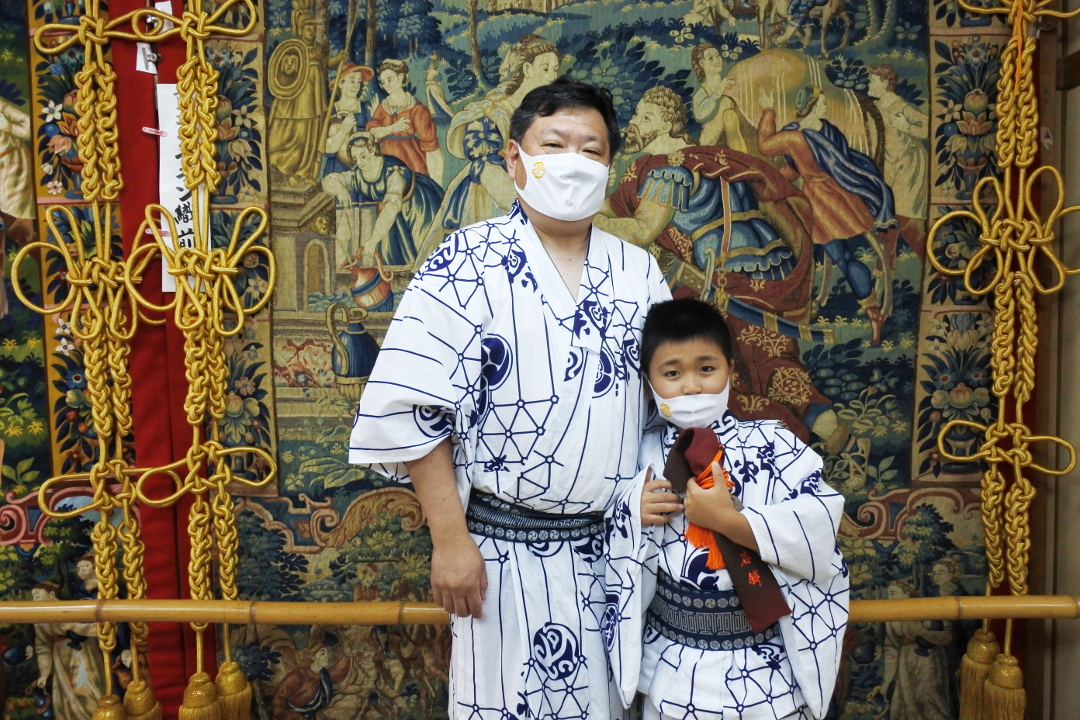
– How nice! Teruki, why did you want to join the band?
– That resonates with your story about wanting to join the band after seeing your uncle play the drum, doesn’t it, Mr. Nishiura?
– Ten pairs! Amazing! About how many members does Kankoboko’s hayashikata band have in total?
2. What exactly does the hayashikata music band do?
– What role does the hayashikata play in the festival?
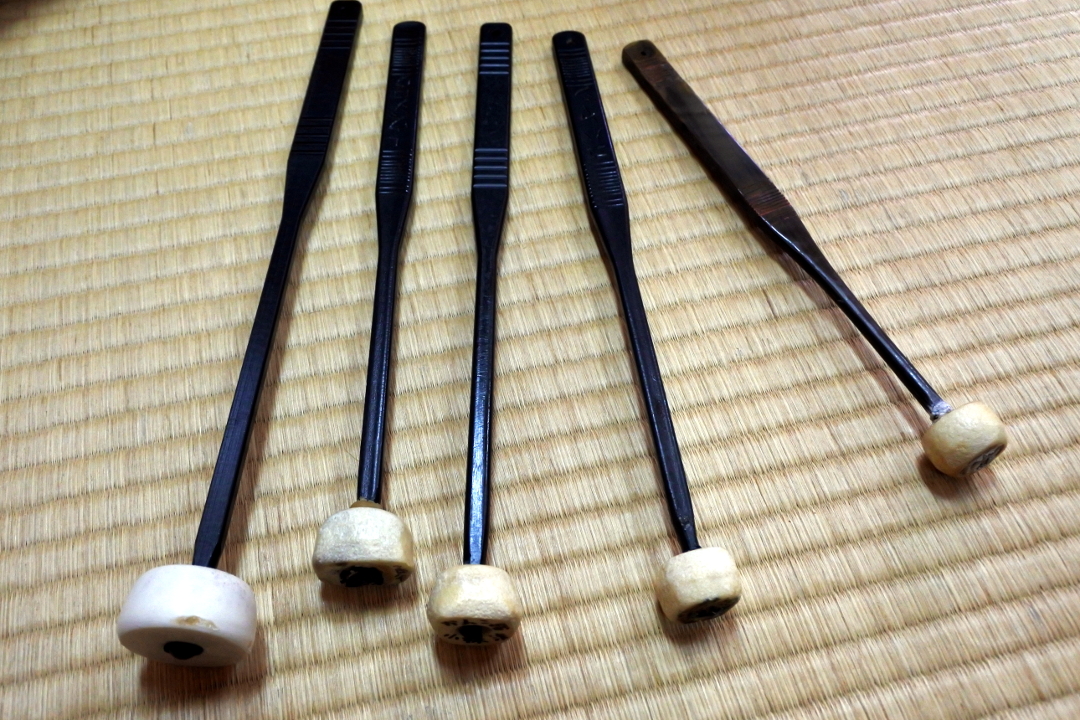
Mr. Nishiura: The band comprises three parts: the kanekata gong players, the fuekata flute players and the taikokata drummers. Until around high school, everyone plays in the kanekata gong part.The Gion Matsuri Festival’s signature onomatopoeia, “kon-chiki-chin,” perhaps something like “dong-chitty-ding” to English speakers, represents the sound that the kanekata part creates by striking these kane gongs. The kane is a type of gong that’s made of a bronze alloy and measures twenty centimeters in diameter by six centimeters in depth. The thickness and the proportion of bronze and tin differ from float to float, meaning that the timbres and tones also vary.

Mr. Nishiura: The children first familiarize themselves with the tempo and other basic aspects of hayashi music. Once they have acquired enough basic skills, they then choose which instrument to specialize in. In my case, I chose to become a taikokata because, since I was a child, I had always wanted to play the drum like my uncle.
Teruki: I also want to become a taikokata drummer like my dad when I grow up!
Mr. Nishiura: The taikokata drum part also plays a role that is like the conductor of the whole band. When we are on the float, we sit at each side of the chigo doll at the front center. The drums set the tempo of the music. Also, the drummers are in charge of deciding the next piece of music to play. This role is called “yobidashi” (lit. “calling”), and we instruct the other band members on the next piece of music to play by choosing and showing them the title of the piece using a notebook with all the titles inscribed in it.

– That does sound like conducting an orchestra! By the way, about how many pieces of music are there?
Mr. Nishiura: Each float has a different repertoire, but the repertoire passed down in Kankoboko Float has about forty pieces. Each piece has its own score, and the drum patterns also differ from score to score. During the procession when the yama and hoko floats parade the streets, there are four corners where the Kankoboko Float needs to turn ninety degrees, and there are certain tunes that we play in a certain order at each corner. For example, we play Kagura, Karako, Hakusan and then Modori-Bayashi at the first turn at the corner of Shijo-dori Street and Kawaramachi-dori Street. Karako has a slow tempo, but Modori-Bayashi is upbeat. Kankoboko’s music band adds an extra, intermediate-tempo piece called Hakusan between these two tunes. This gives the music a smooth transition and improved flow.
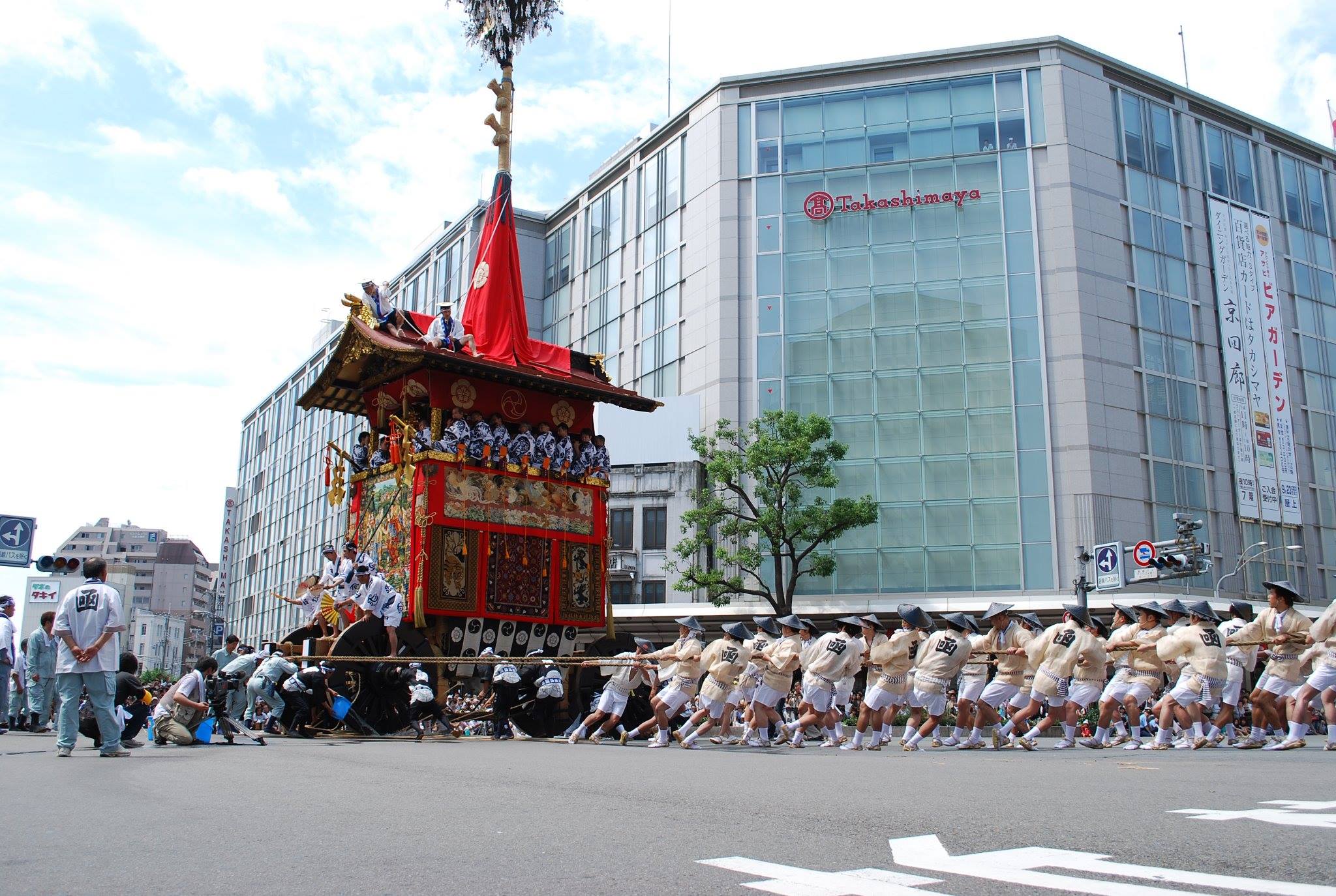
– I didn’t know that the pieces that are played while turning the float were predetermined. By the way, it must be hard to remember all forty tunes.
– It seems natural for a festival with such a long history as this to have episodes like that. By the way, what kind of hayashi music pieces do you like personally?
Mr. Nishiura: I like a piece called “Chidori.” It’s a tune we play around the turn at the last corner at Shijo-dori Street and Shinmachi-dori Street. It’s a mellow tune highlighting the timbre of the flute and the gong. Each time we play it I think, “Ah, the parade will be over when we turn this corner!” and I go through mixed feelings of sadness and relief. I also like how the music speeds up as we play with extra fervor towards the festival’s grand finale.
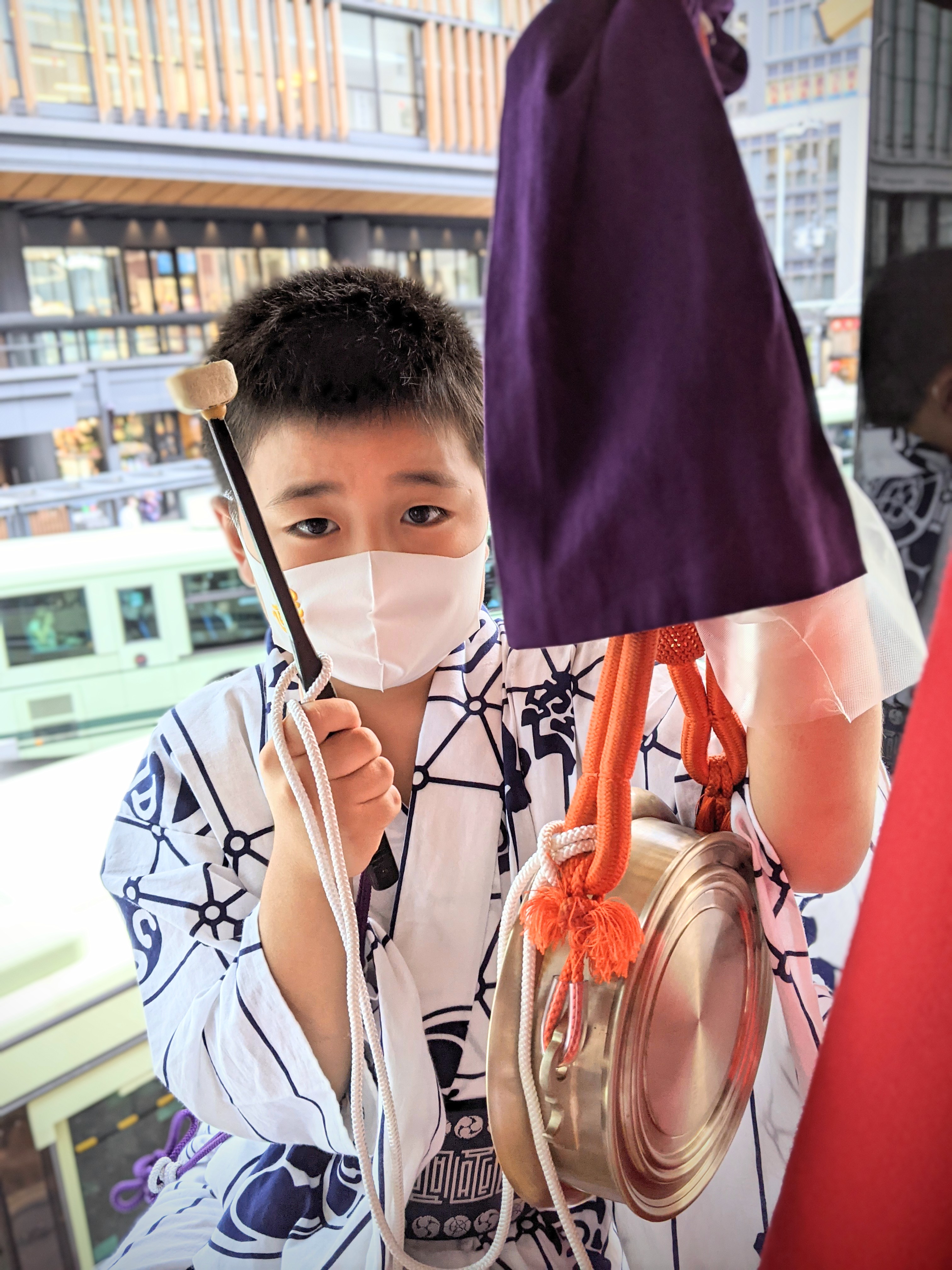
– I’d really love to listen to that! How about you Teruki, what’s your favorite piece of hayashi music?
Teruki: I like Jibayashi and Ichi-ni-ssan.
Mr. Nishiura: Those are the two songs he can play (laughter). You’re going to practice and learn how to play more tunes, right Teruki?
Teruki: Yeah!
*You can try listening to some of Kankoboko Float’s music here.
3. How are the hayashi music skills passed down through generations?
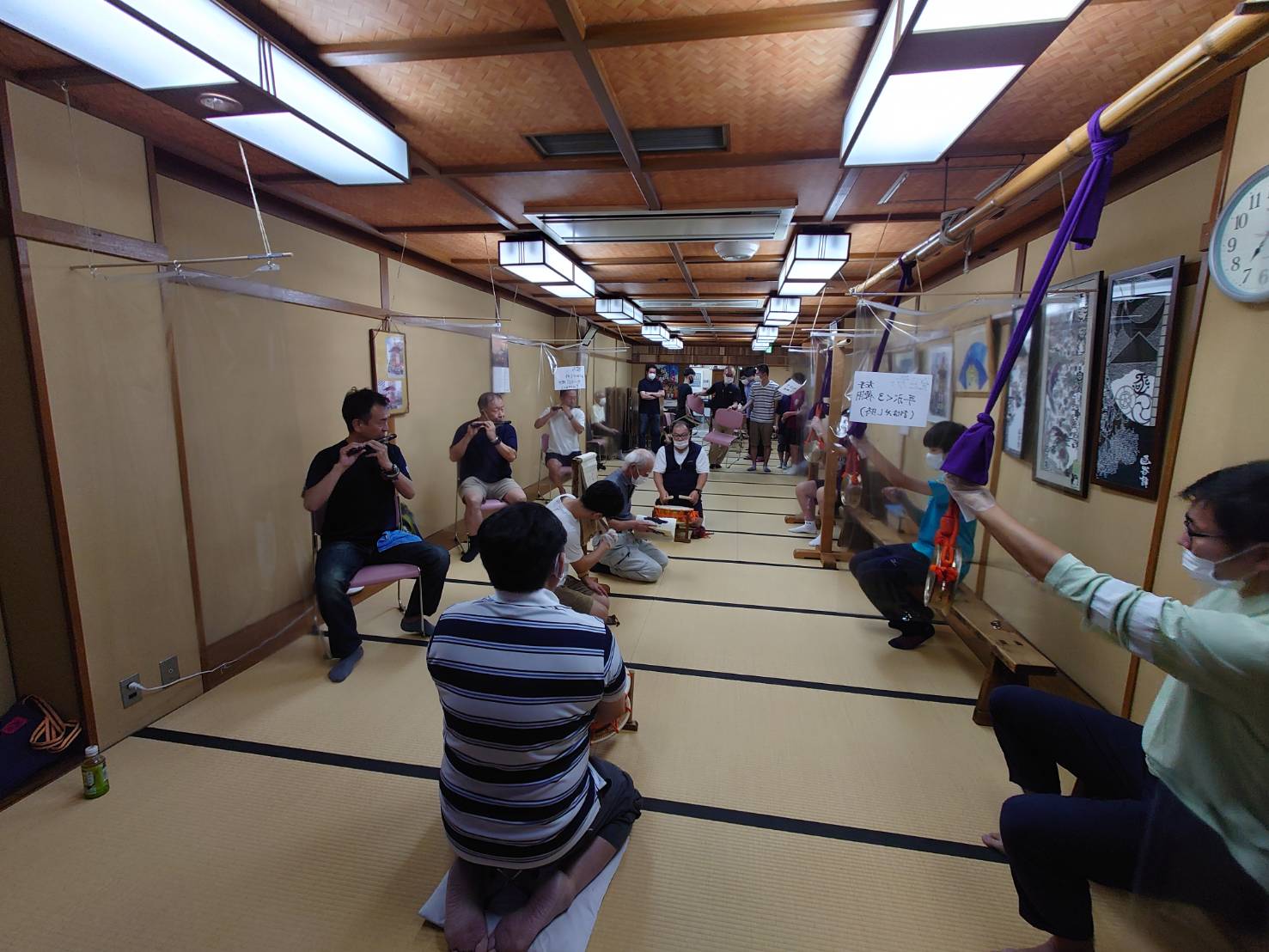
– I’m also looking forward to seeing Teruki play an active role in the band! How do you usually practice?
Mr. Nishiura: There’s a practice day once a month on the second floor of the Kankoboko Float’s community house. But, its primary purpose is to tune up as a band. So, naturally, we have to practice in our own free times too. We have older members of the band teach us, or we practice by ourselves listening to CD recordings. As for the drum, as much as learning how to play it, it is also necessary to first learn how to assemble and tune the instrument using its cords. The tone changes depending on how you fasten the cords around the drum. Mastery of this tuning requires two to three years of learning under an older member of the drum part. In particular, the high tone is a unique feature of the Kankoboko Float’s drums, so we need our seniors to teach us how to tune it perfectly.
Teruki: My dad teaches me how to play my part, but when he’s practicing his drum, an older member would teach me, too.
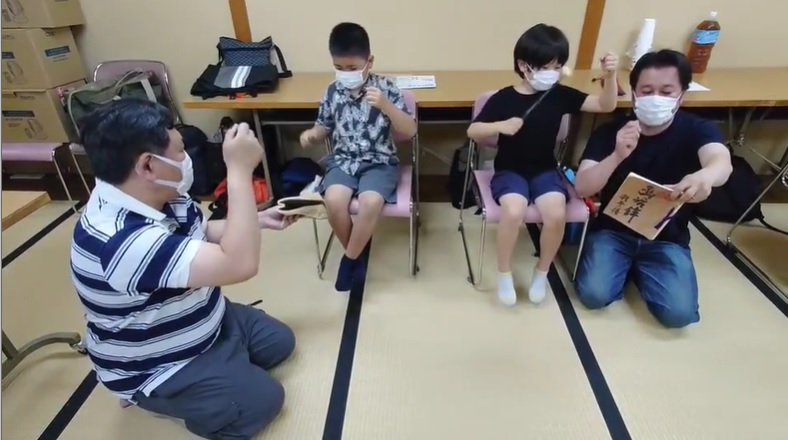
– I see, so that’s how the skills are passed down from older to younger members of the band. I imagine you must practice a lot, but isn’t it hard to balance that with other responsibilities such as work and school?
Mr. Nishiura: Actually, I went to university in another prefecture, so I had some time away from hayashi music while I was studying. But, in my third year, I couldn’t get the festival off my mind, so I secretly came to watch how everything was going during the festival... and, an older member of the band found me! He said to me, “Why don’t you come back, instead of sneaking around like that?” That caused me to make up my mind; I thought, “I want to move back to Kyoto and find a job there after I graduate.” The company that I work for is run by a band member too, so I’m able to get off work early on lesson days and take the day off for the parade day. I’m lucky my workplace is very understanding of my participation in the Gion Matsuri Festival.
Teruki: There was even hamo in the school lunch during the festival!
– Wow! Hamo, pike eel, for school lunch? Gosh, that sure sounds like a Kyoto school.
– I envy you, Teruki (laughter).
4. What is the best thing about being a hayashikata musician?

– I imagine that the cooperation of other members of your family must have been essential for you to be able to participate in the festival as you do.
Mr. Nishiura: Certainly, yes. I think it’s hard at times, especially for my wife, because I often leave the house to go to practice or to meetings related to the festival. But, since our son started participating this year, I’ve been noticing a slight difference in her supportiveness. I think her perception of the festival changed a little. As for myself, It’s been my dream to wave to my family from the float with my child on my lap, just as I’ve seen older members of the band do. I think that is one of the greatest privileges of being a hayashikata member. There was no parade this year, but hopefully I’ll be able to be accomplishing this dream of mine during next year’s festival.
– Fabulous! On the other hand, is there anything you feel especially challenging or hard about being in the hayashikata?
– Oh, really… Well, the more you tell me about it, it seems that you members of the hayashikata have deep bonds like a family.
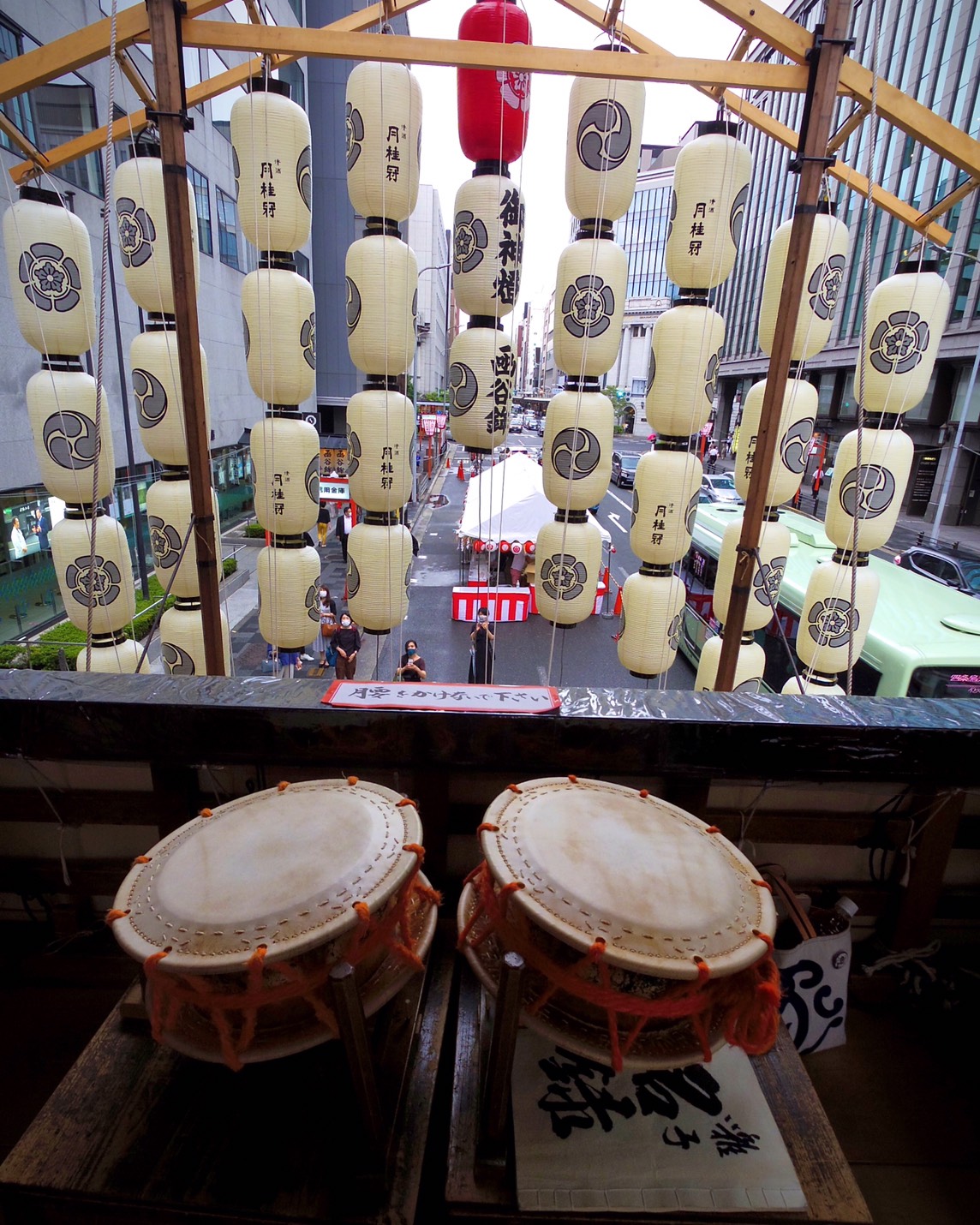
– Finally, Mr. Nishiura, what does the Gion Matsuri Festival mean to you?
– Wonderful. Now, how about you Teruki, how do you see yourself in the future?
– Mr. Nishiura, it seems like you’re really bound to play the drum for the rest of your life!
Just as Mr. Nishiura’s heart was kindled by watching his uncle playing in the band, now his son is dreaming to become a hayashikata drummer. The music of Gion Matsuri Festival is passed down from older to younger members of the hayashikata, who are tied by deep bonds, much like an extended family.When the festival month of July is over, the practice days for the next summer will begin. Let us hope that we will be able to enjoy watching the floats guided by the festival music once again parade the streets of Kyoto next summer.
Kankoboko Preservation Society


